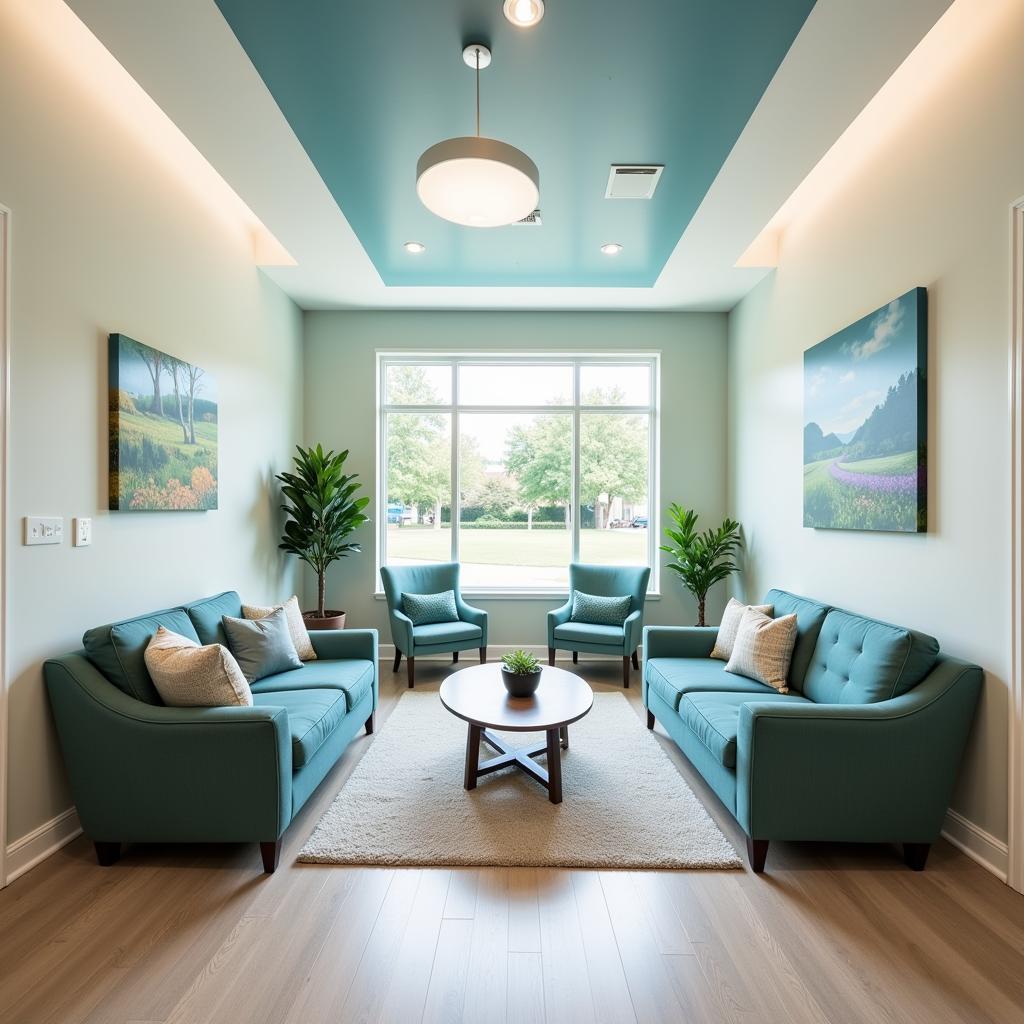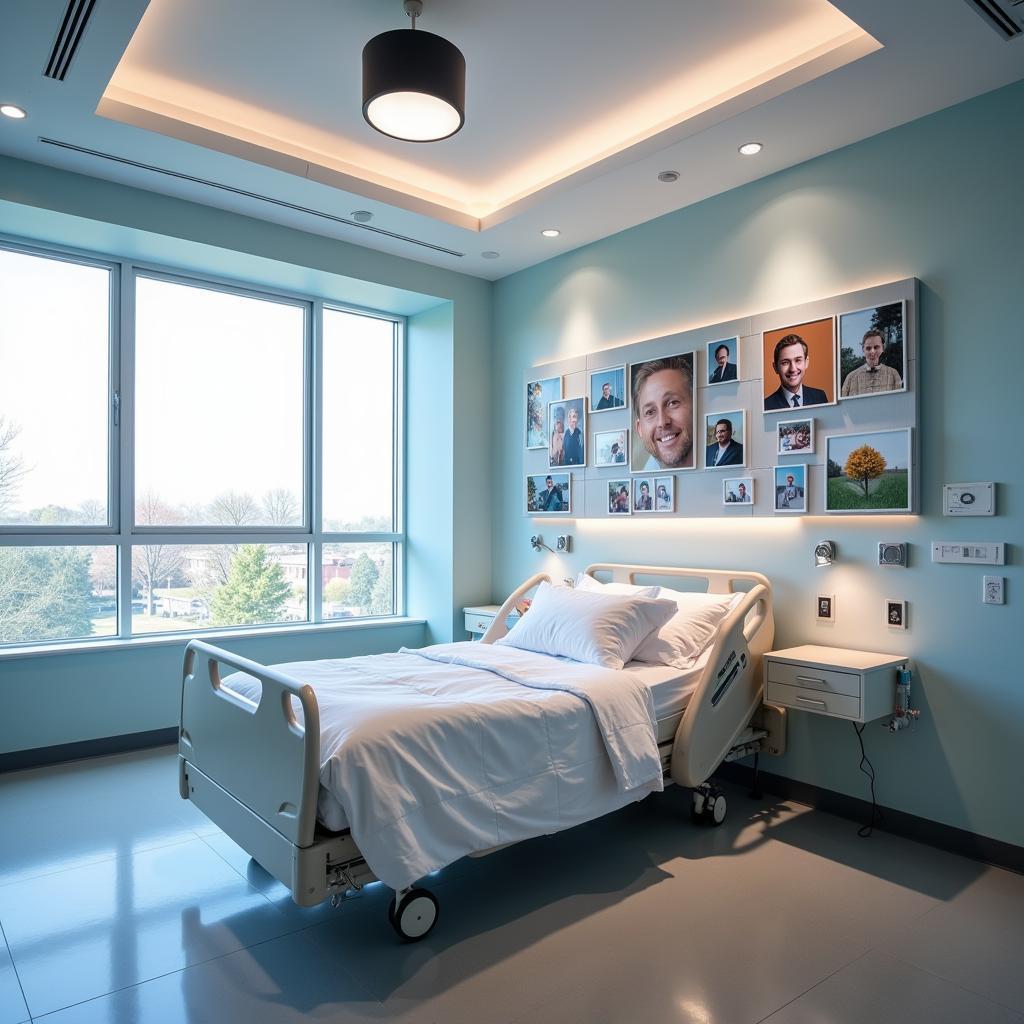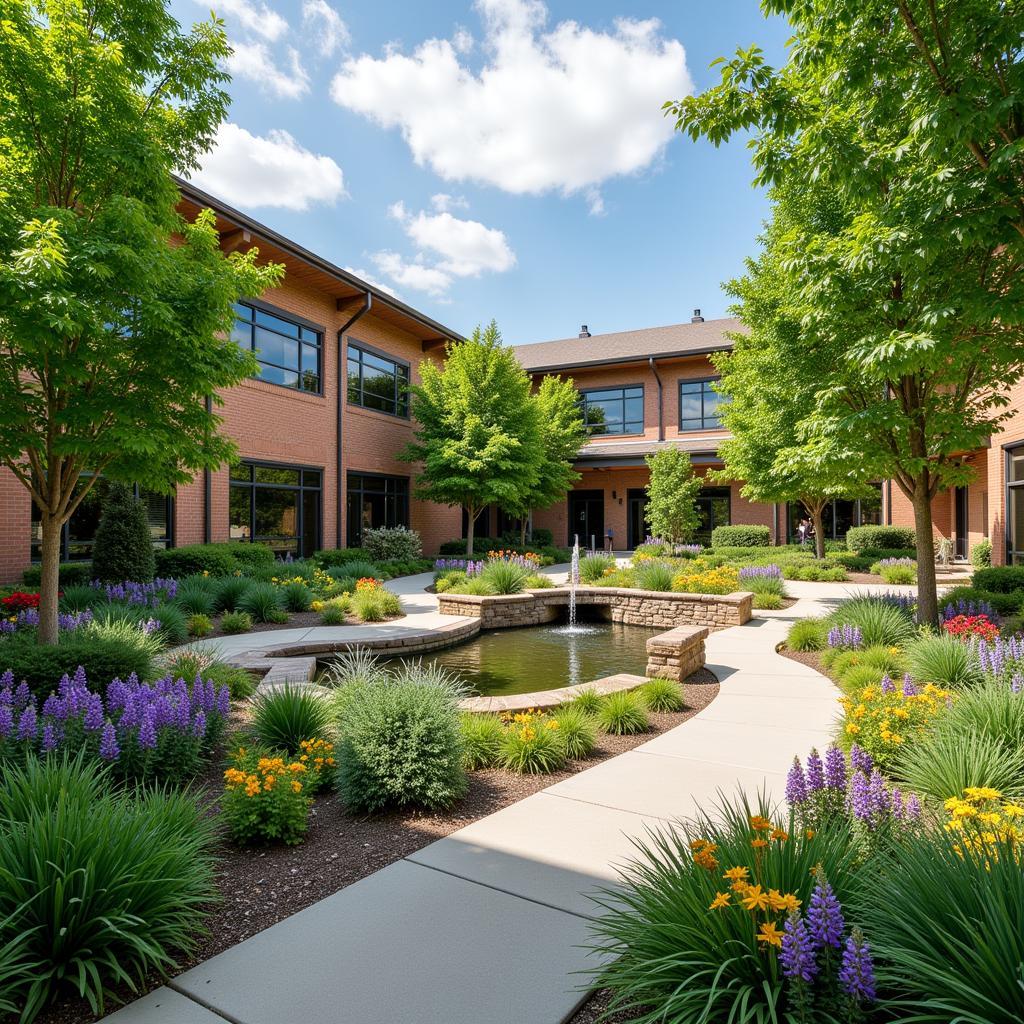Hospital Walls. They often fade into the background as we navigate sterile hallways, anxiously anticipating test results, or comforting loved ones. However, these seemingly passive structures hold a powerful, unspoken language, significantly influencing patient experience and recovery.
Beyond their primary function of dividing space and ensuring privacy, hospital walls can become canvases of hope, serenity, and healing. By thoughtfully considering their design and impact, hospitals can transform these often-overlooked surfaces into powerful tools that contribute to a positive and supportive healthcare environment.
More Than Just Bricks and Mortar: The Impact of Hospital Walls on Wellbeing
 Hospital waiting area with soothing colors and natural light
Hospital waiting area with soothing colors and natural light
Numerous studies highlight the profound impact of physical environments on patient wellbeing. In healthcare settings, where stress and anxiety are often heightened, the design and ambiance play a crucial role in influencing patient emotions, stress levels, and even perceived pain.
Consider the stark contrast between a sterile, white-walled examination room and one adorned with calming colors, nature-inspired artwork, and soft lighting. The former can evoke feelings of coldness and unease, while the latter promotes a sense of tranquility and hope.
This shift from purely functional to aesthetically pleasing and emotionally supportive design can significantly impact patient experience:
- Reduced Stress and Anxiety: Soothing colors, natural elements, and calming artwork can help lower blood pressure, reduce anxiety, and create a more positive overall experience.
- Improved Pain Management: Distractions such as artwork and views of nature can divert attention away from pain and discomfort, potentially reducing the need for pain medication.
- Enhanced Communication and Trust: Warm and inviting spaces can foster a sense of comfort and openness, promoting better communication between patients, families, and healthcare providers.
Designing for Healing: Transforming Hospital Walls into Therapeutic Elements
 Hospital room with adjustable lighting and a customizable art wall
Hospital room with adjustable lighting and a customizable art wall
Creating a therapeutic environment through hospital wall design involves a multi-faceted approach, incorporating elements of color psychology, art therapy, and evidence-based design principles:
1. The Psychology of Color: Painting a Picture of Peace and Tranquility
Color holds immense power over our emotions and perceptions. In healthcare settings, color choices should extend beyond mere aesthetics, leveraging the principles of color psychology to create specific moods and atmospheres:
- Cool Blues and Greens: These calming hues evoke feelings of tranquility, peace, and serenity. They are often favored for areas where patients may experience stress or anxiety, such as waiting rooms, treatment areas, and patient rooms.
- Warm Yellows and Oranges: These cheerful colors can stimulate optimism, happiness, and energy. They can be strategically used in pediatric wards, playrooms, or areas where a sense of positivity and vibrancy is desired.
- Neutral Tones: Shades of beige, gray, and cream can create a calming and sophisticated backdrop, especially when paired with carefully chosen accent colors and textures.
2. Art as Therapy: Transforming Walls into Windows of Hope
Art possesses a unique ability to engage our emotions, spark conversations, and provide a much-needed escape from the clinical setting. Incorporating art into hospital walls can have a profound impact on patient experience:
- Nature-Inspired Art: Landscapes, seascapes, and images of nature can have a calming and restorative effect, reducing stress and promoting a sense of peace.
- Abstract Art: Abstract pieces can evoke a range of emotions and provide a visual distraction, offering a mental escape from the hospital environment.
- Interactive Art Installations: Engaging patients with interactive art pieces can provide a welcome distraction, stimulate creativity, and encourage movement and social interaction.
3. Beyond Aesthetics: Prioritizing Functionality and Accessibility
While aesthetics are important, functionality and accessibility should remain paramount in hospital wall design.
- Easy-to-Clean Surfaces: Hospital walls should be covered in durable, easy-to-clean materials that can withstand frequent sanitization.
- Wayfinding and Signage: Clear and concise signage is crucial for navigation. Walls can be used effectively to display wayfinding information in a visually appealing and easily understandable manner.
- Acoustic Considerations: Hospital walls should be designed to minimize noise pollution and create a more peaceful environment conducive to healing.
Beyond the Hospital Walls: Extending the Healing Environment
The impact of thoughtful design extends beyond the walls of hospitals. By considering the surrounding landscape, natural light, and overall ambiance, healthcare facilities can create a holistic healing environment.
 Hospital courtyard with lush greenery and walking paths
Hospital courtyard with lush greenery and walking paths
- Healing Gardens: Integrating gardens and green spaces into hospital grounds can provide patients and families with a place of respite and tranquility, promoting a sense of peace and connection with nature.
- Natural Light: Maximizing natural light within hospitals can positively impact mood, sleep patterns, and overall well-being.
A Silent Symphony of Healing
Hospital walls, often overlooked, hold the power to profoundly impact patient experience. By thoughtfully considering their design, incorporating elements of color psychology, art therapy, and evidence-based design principles, hospitals can transform these surfaces into powerful instruments of healing.
As we move beyond the purely functional aspects of healthcare design, we uncover a world of possibilities within hospital walls – a silent symphony of color, art, and nature working in harmony to create a truly therapeutic environment.
Frequently Asked Questions About Hospital Wall Design:
1. What is the best color to paint hospital walls?
While there is no single “best” color, cool blues and greens are often favored for their calming and soothing effects.
2. How can art contribute to a healing environment?
Art can provide a welcome distraction, evoke positive emotions, and even stimulate conversation and social interaction.
3. What are some key considerations for hospital wall design?
Functionality, accessibility, durability, and ease of cleaning are crucial, along with aesthetics and the use of color and art.
4. How can hospitals incorporate nature into their design?
Healing gardens, green walls, and maximizing natural light are excellent ways to bring the outdoors in.
5. What is the importance of wayfinding in hospital design?
Clear and concise signage helps patients and visitors navigate the hospital easily, reducing stress and confusion.
Need help with creating a comfortable and healing environment? Contact us at Phone Number: 02437655121, Email: [email protected] Or visit us at: 298 Cau Dien Street, Minh Khai, Bac Tu Liem, Hanoi, Vietnam. Our customer care team is available 24/7.
For more information on creating a positive healthcare environment, you can read more about Walls Regional Hospital Cleburne or explore the history of Norristown State Hospital famous inmates. We also have resources available for those struggling with I hate hospitals feelings. Looking for pediatric care options? You can find information on Phoenix Children’s Hospital Mercy Gilbert on our website. If you are interested in our services, we also offer Hospital painting service.